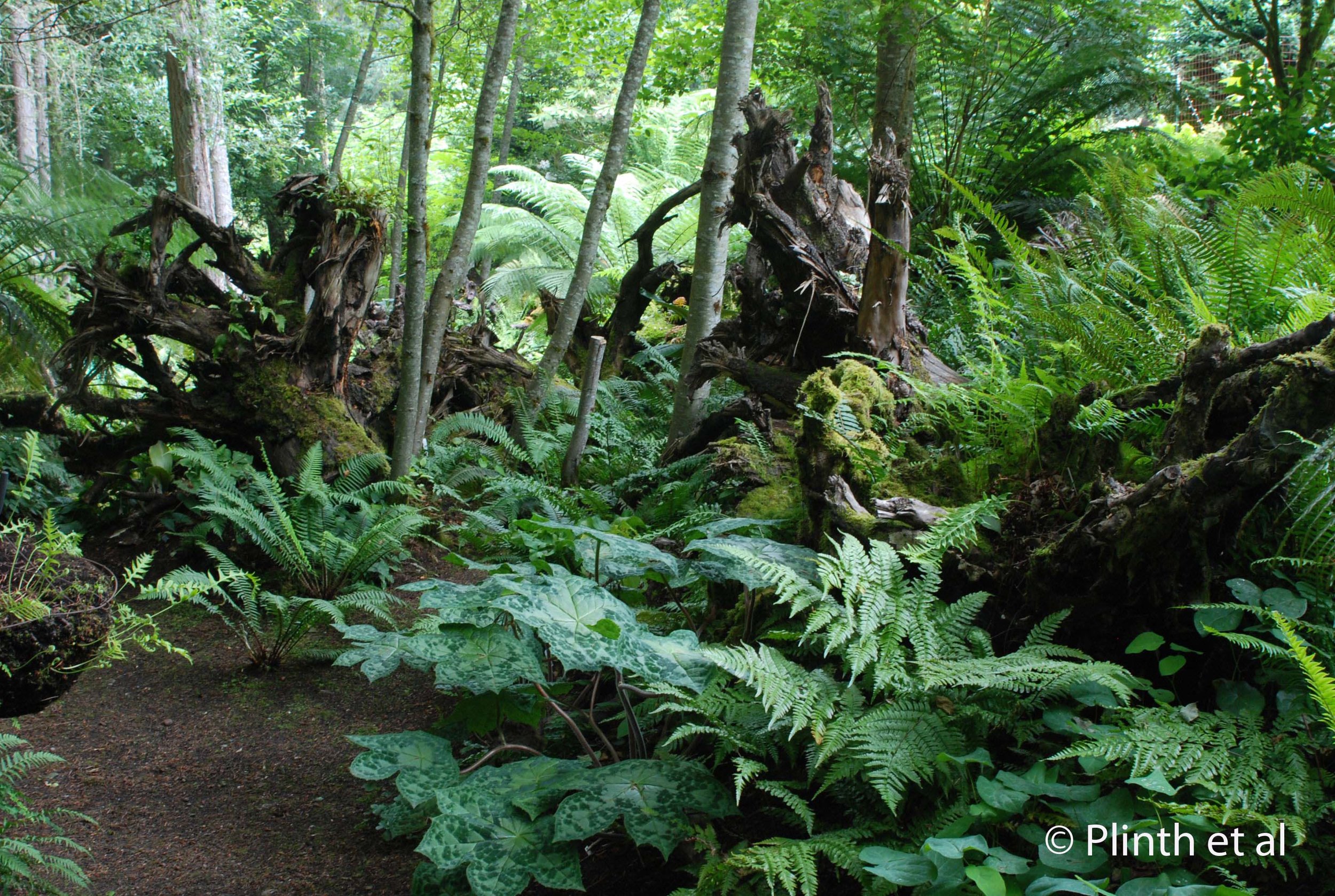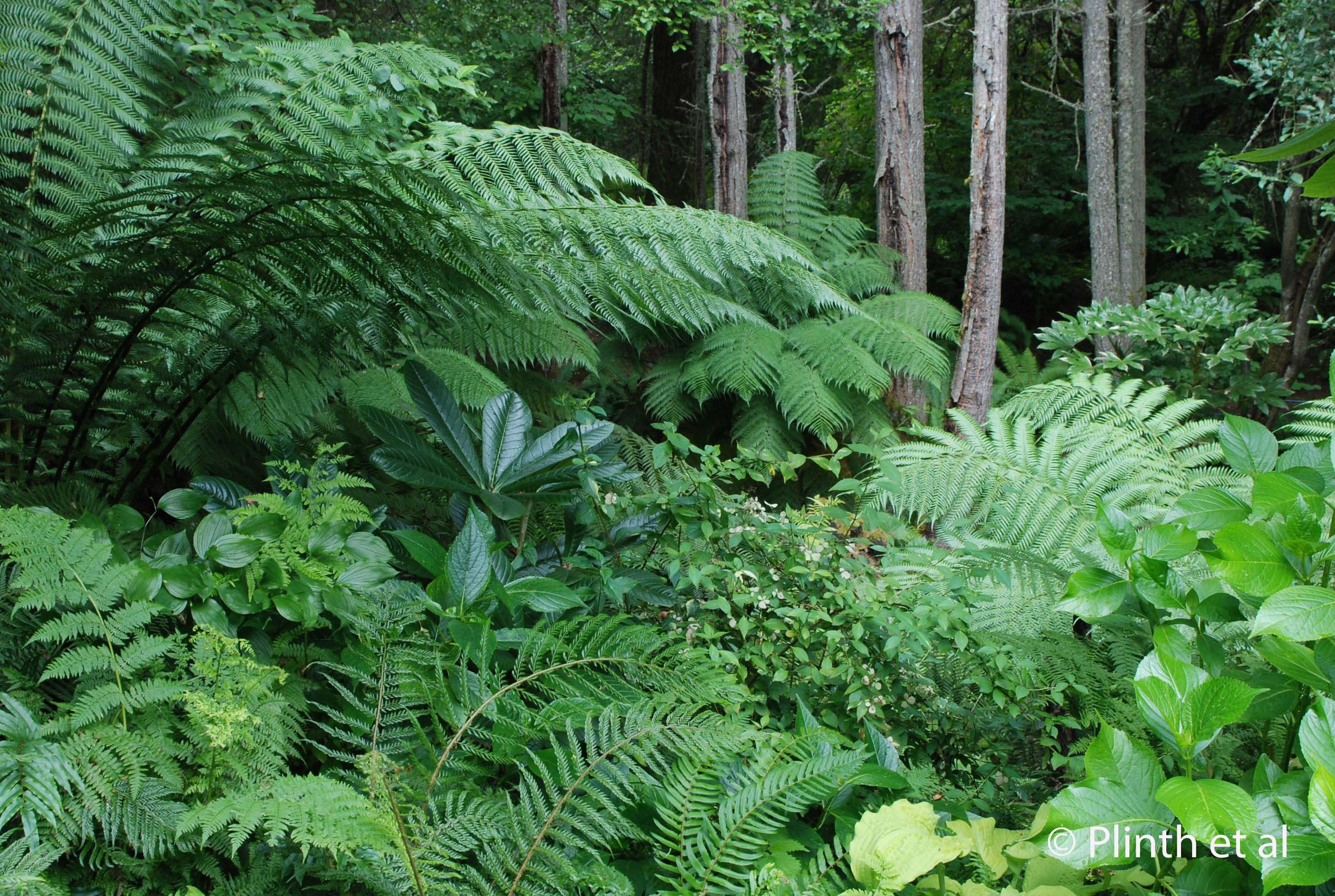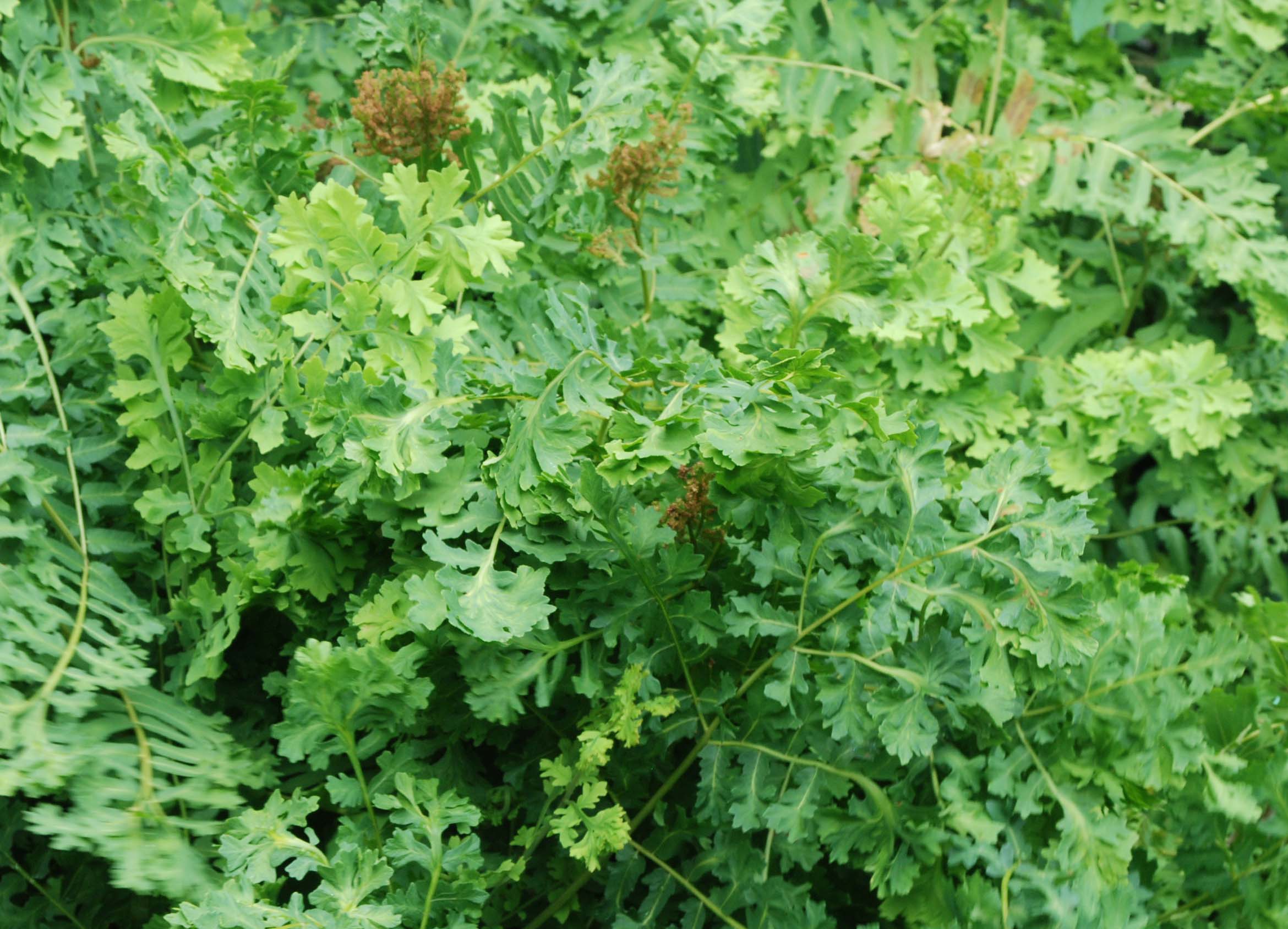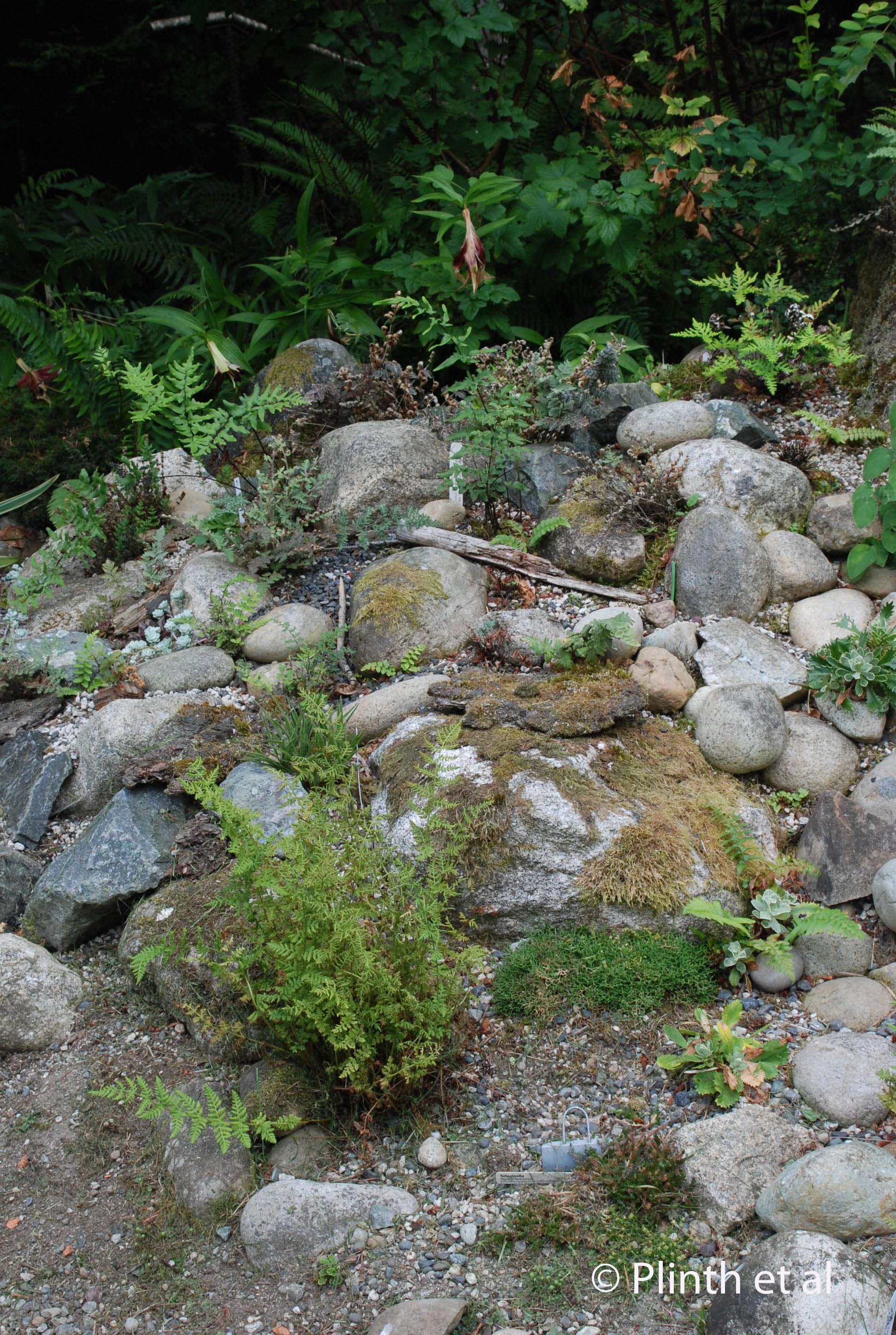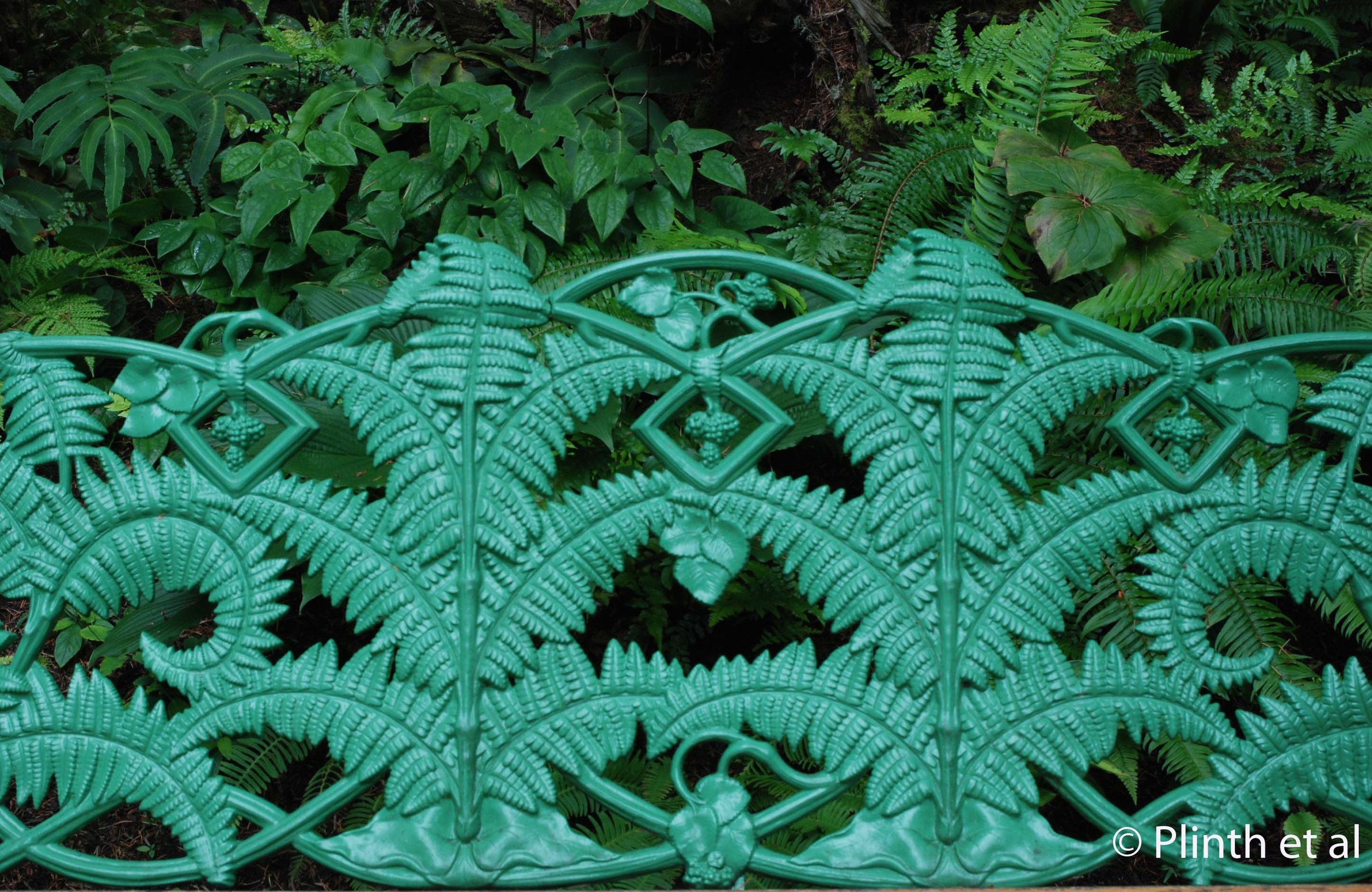To Be Stumped
Given how ferns are an quintessential part of the Pacific Northwest landscapes, it seems a surprise that no one in the Pacific Northwest region had conceived a stumpery garden. Sourcing stumps should be a cinch in a region still dependent on the logging industry, and the mild moist climate encourages not only ferns, but also mosses and shade perennials for that verdant look. The concept of a stumpery is hardly novel for the Victorians popularized them after the first one was created at Biddulph Grange, Staffordshire, UK, in 1856.
Only six years old, Pat and Walt Riehl's Stumpery in Vashon Island, Washington State is a youngster if compared with Biddulph Grange. Nonetheless it has filled out impressively, a testament of the region's ideal climate for ferns and shade perennials. The Riehls were inspired to create a stumpery on their property bought in 2006 after the British fern expert Martin Rickard led their European trip to view ferneries and stumperies. They had already cleared the nettles and other invasive weeds from the woodlands, and saw an opportunity to create a stumpery. In turn, the Riehls hired Rickard to design and plant one. Nearly 50 madrone and Douglas fir stumps were brought in from Vashon Island construction sites and carefully positioned to form the layout of the stumpery. On the sunny periphery facing the house, Pat Riehl added Japanese maples, hardy scheffleras, and rhododendrons that partially screen the stumpery from immediate viewing. They transition well with the large Tasmanian tree ferns (Dicksonia antarctica), hydrangeas, and broad-leafed evergreens across the path dividing the sunny and shady sections.
Unusual ferns can be found in the shady embankment, prompting us to take photographs and notes.
Before descending the steps to the Stumpery, we paused to study the rock garden where Pat has tucked in choicer ferns requiring sharp drainage or otherwise lost among the larger plants in the stumpery. Pat admits being unhappy about the rock garden, "I need to redo this bit and take out the plants that don't belong." She points out a floppy purple-flowering Caleceloria that will be taken out - "it self-seeds and doesn't justify the space it takes".
To view the stumpery, one has to go through the tunnel constructed of tree trunks. Dwarfed by the stumps and luxuriant greenery, we immediately felt Lilliputian.
Nearly invisible, a metal framework built by Walt supports the stumps stacked over the gate. We traced our steps cautiously through the tunnel, exiting to discover a labyrinth of pathways threaded through more stumps. More ferns and woodland perennials fill the available nooks and crannies in the stumps.
Over time, moss has begun to colonize the stumps, softening the hard-edged, splintering edges.
The stumps themselves are sculptural, possessing an animalistic individuality. Gnarled and bleached, they contort without intervention, oblivious to the ferns or eventual decay.
Always enjoying a chance to stump visiting fern fans and pteridologists, Pat includes fern-like plants, such as Pteridophyllum racemosum (a poppy relative) or the largely Asian genus Coptis. "I tricked two fern experts on this plant," Pat said with a laugh, pointing out Pteridophyllum racemosum, "they thought that it was a Blechnum!"
If the stumps aren't adequate receptacles for ferns, containers or rustic furniture are appropriated for adding more.
The Riehls are modern equivalents of Victorian pteridomaniacs, and in their beautiful home, ceramics and various objets d'art are decorated with fern motifs. In the Stumpery, we relaxed on a replica of a Coalbrookdale 'Fern and Blackberry' bench, taking in the greenery and the cool Pacific Northwest air.
~Eric



